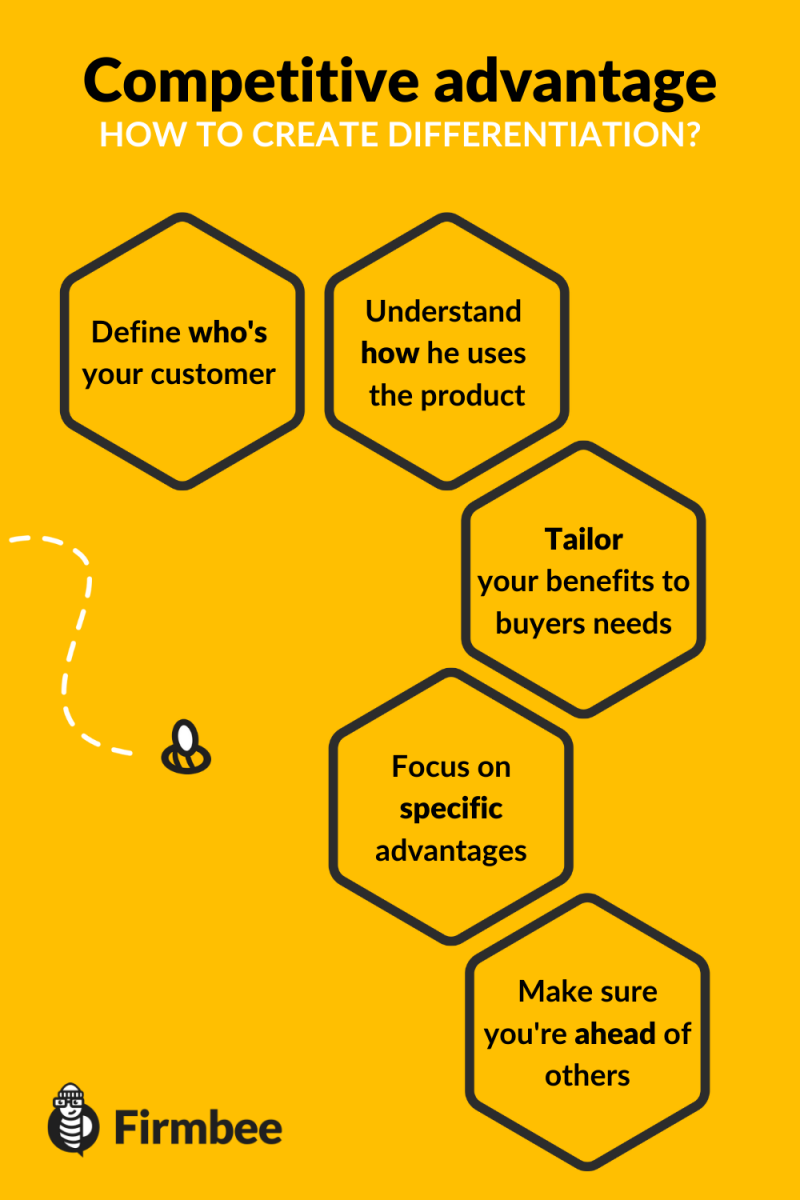What makes a customer choose company A and ignore the arguments formulated by company B? The set of factors that convince the consumer that his choice is correct while abandoning the services of similar companies, is called competitive advantage. Entities that are better positioned in the market relative to their competitors can attract and encourage more people to take advantage of the products or services they offer.
Defining your brand’s competitive advantage:
- Competitive advantage – basic information
- 5 areas of competitive advantage
- Where does a company’s competitive advantage come from?
- How do you gain an edge over the competition?
- Competitive advantage – example
How do you develop this advantage and how do you put it into practice? What is your competitive advantage in the context of running your own business? Answers to these questions can be found in the article below.
Competitive advantage – basic information
Definition
Competitive advantages are a set of factors that place a firm in an advantageous position. A company that has a handicap can prosper better in the market than its competitors.
The essence of this issue can be reduced to the fact that the company does something better, so it can count on better results of its efforts.
The traditional concept
The researcher of marketing issues, Zdzisław Pierścionek, indicates the most important concepts of building competitiveness of the enterprise: he mentions such aspects as competing in the area of costs, quality, or using the position of a leader in a particular field.
Thus, traditional concepts indicate that the most important factors for firms to compete are to offer goods that are cheaper and better than their competitors. In today’s circumstances, these are not the only factors to consider.
5 areas of competitive advantage
A company’s competitive advantage can be assigned to one of five classification areas. At the same time, it is worth remembering that it is not given once and for all, and under the influence of time and variable factors it can be lost or gained by the company²:
The 5 types of competitive advantage include:- natural aspect – a type of competitive advantage related to the better location of the company in terms of location or legal regulations;
- price aspect – an advantage built on the principles of price or cost leadership;
- differentiating aspect – an advantage related to customer perception, considering a product to be of better quality;
- service aspect – these are competitive advantages built on the basis of factual contact with customers, professionalism of staff and care for mutual relations with consumers;
- entry aspect – a type of advantage associated with the development of new patents, the implementation of modern technologies, establishing a barrier to competition.

Where does a company’s competitive advantage come from?
Proven methods
There is no denying that most companies understand the above-mentioned conditions and characteristics of competitive advantage. Hence, very often you can see advertising messages, containing words such as the cheapest, best quality, innovative solution. In this way, companies try to build a competitive advantage on already proven patterns. However, this is not the only way to stand out from the competition.
Take a deeper look into your brand
The product offered by a particular entity does not have to be the best for the consumer to take advantage of it. What matters is the environment, contact with the customer, professional service, readability of the website, the correctness of its operation, and even the way of taking pictures of products included in the subpages. Repeating phrases created by competitors is not a good way to effectively create a handicap on the market.
How do you gain an edge over the competition?
Make a bond between your brand and customers
It is worth betting on building positive associations with the company. This can be done by maintaining an interesting page on social media, or by creating valuable content on a blog coupled with an online store.
Other ideas
In this age of rapid information exchange, it is important to expressly address the concerns of potential customers. It is necessary to ensure a quick response to emerging questions and disputes.
An additional advantage is also after-sales care: taking care of customer satisfaction after the transaction is completed. Many companies build a competitive advantage by offering an additional warranty on purchased equipment, creating loyalty cards, or providing regular promotions for regular customers.
Competitive advantage – example
Formulating clear messages, understandable for the customer is an added value. A consumer who is confronted with the sentence: we reliably perform our services, may be disappointed by the too general character of the message. Instead, it is worth convincing the reader that: the services are performed by professional staff with many years of experience in the industry, confirmed by many certificates.
It is also not recommended to create the illusion of reliability. The message saying: we are the fastest in the region is too broad and in no way measurable for a potential customer. A consumer will perceive much better the assurance that: we ship goods up to three hours after the payment is credited. It is a clear and verifiable sentence, and therefore more convincing for the recipient.
Remember – your brand’s competitive advantage has a big influence on your further marketing strategies and visual identity, so incorporate some time to think about it properly.
Author: Zofia Lipska
With over 10 years of experience in digital marketing, Sophia not only knows the rules of this industry but above all knows how to break them in order to achieve outstanding and creative results.


















